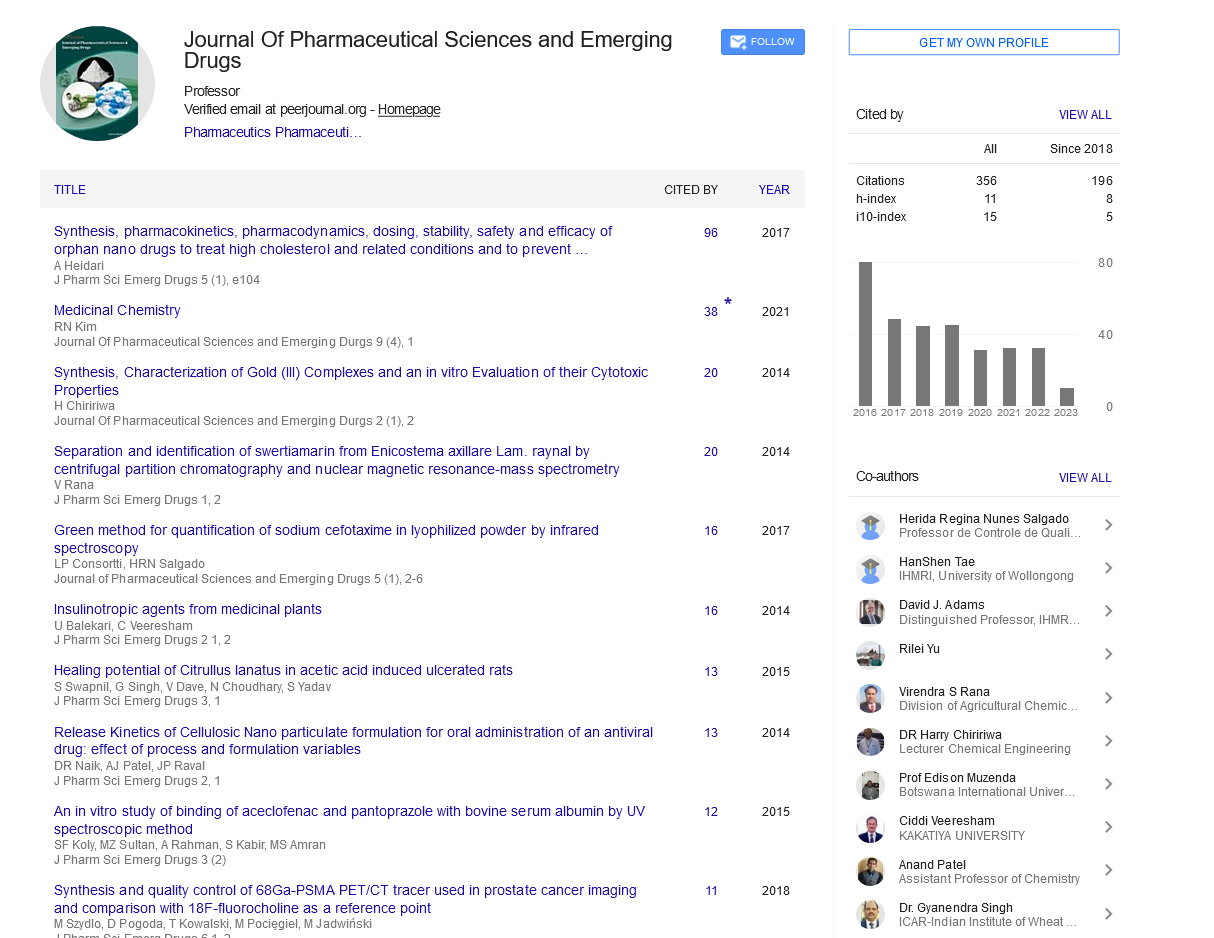Perspective, J Pharm Sci Emerg Drugs Vol: 12 Issue: 3
Sustainable Pharmaceuticals: From Plant-Based Compounds to Advanced Formulations
Cristian Gibbs*
1Department of Pharmaceutical Sciences, Brigham and Women's Hospital, Boston, United States of America
*Corresponding Author: Cristian Gibbs,
Department of Pharmaceutical Sciences,
Brigham and Women's Hospital, Boston, United States of America
E-mail: cris15@gmail.com
Received date: 22 May, 2024, Manuscript No. JPSED-24-148997;
Editor assigned date: 24 May, 2024, PreQC No. JPSED-24-148997 (PQ);
Reviewed date: 07 June, 2024, QC No. JPSED-24-148997;
Revised date: 14 June, 2024, Manuscript No. JPSED-24-148997 (R);
Published date: 21 June, 2024, DOI: 10.4172/2380-9477.1000190
Citation: Gibbs C (2024) Sustainable Pharmaceuticals: From Plant-Based Compounds to Advanced Formulations. J Pharm Sci Emerg Drugs 12:3.
Abstract
Description
The pharmaceutical industry has long relied on both natural and synthetic sources to develop life-saving drugs. Historically, nature has been a treasure trove of medicinal compounds, with many of our most important treatments being derived from plants, fungi and other organisms. In recent decades, advances in synthetic chemistry and biotechnology have allowed scientists to create powerful medications in the lab. However, with growing concerns about the environmental impact of drug development, there has been an increasing focus on sustainability in pharmaceuticals. Natural products have been the foundation of drug discovery for thousands of years. Plants, animals and microorganisms have provided compounds with therapeutic properties that have been harnessed to treat diseases.
For example, aspirin, one of the most widely used drugs, was derived from willow bark, while penicillin, the first antibiotic, was discovered from a type of mold. Nature continues to inspire modern drug discovery, with compounds derived from marine organisms, bacteria and plants being investigated for their potential to treat conditions like cancer, infections and autoimmune diseases. To address these concerns, the pharmaceutical industry is increasingly embracing sustainable practices in drug development and production. Green chemistry, for example, focuses on designing manufacturing processes that minimize waste and reduce the use of hazardous chemicals. By optimizing reaction conditions and using renewable raw materials, companies can lower their carbon footprint and reduce the environmental burden of drug production.
One of the most promising areas of sustainable pharmaceutical development is biotechnology and synthetic biology. These fields allow scientists to engineer microorganisms, such as bacteria and yeast, to produce complex drug molecules. For example, insulin, which was once derived from animal pancreases, is now produced by genetically modified bacteria. This method not only reduces the need for animal sources but also allows for more efficient and scalable production. Biotechnology also opens the door to developing drugs that are more environmentally friendly in their entire lifecycle. For example, biodegradable drug delivery systems are being developed to reduce pharmaceutical waste and new techniques in genetic engineering are enabling the creation of biobased drugs that are less harmful to the environment.
As we look to the future, the challenge for the pharmaceutical industry is to balance innovation with sustainability. One promising approach is bioprospecting, which involves searching for novel compounds in sustainable ways, such as using renewable sources or developing partnerships with indigenous communities to harvest medicinal plants responsibly. Another innovation is the use of Artificial Intelligence (AI) to streamline drug discovery, reducing the time and resources needed to develop new treatments. AI can analyze vast amounts of data to identify potential drug candidates more efficiently, leading to fewer failed experiments and less waste during the development process.
Conclusion
Additionally, pharmaceutical companies are investing in recycling programs to safely dispose of unused drugs and reduce environmental contamination. This approach is complemented by the development of drugs with longer shelf lives, which helps minimize waste. Sustainable pharmaceuticals represent a merging of tradition and innovation, drawing from the natural world while leveraging the power of synthetic chemistry and biotechnology. As environmental concerns become more pressing, the pharmaceutical industry must continue to evolve, finding ways to develop life-saving medications without compromising the health of our planet. By focusing on sustainability, the industry can create a future where both human health and environmental well-being are prioritized, turning natural sources and synthetic miracles into a harmonious balance.
 Spanish
Spanish  Chinese
Chinese  Russian
Russian  German
German  French
French  Japanese
Japanese  Portuguese
Portuguese  Hindi
Hindi 